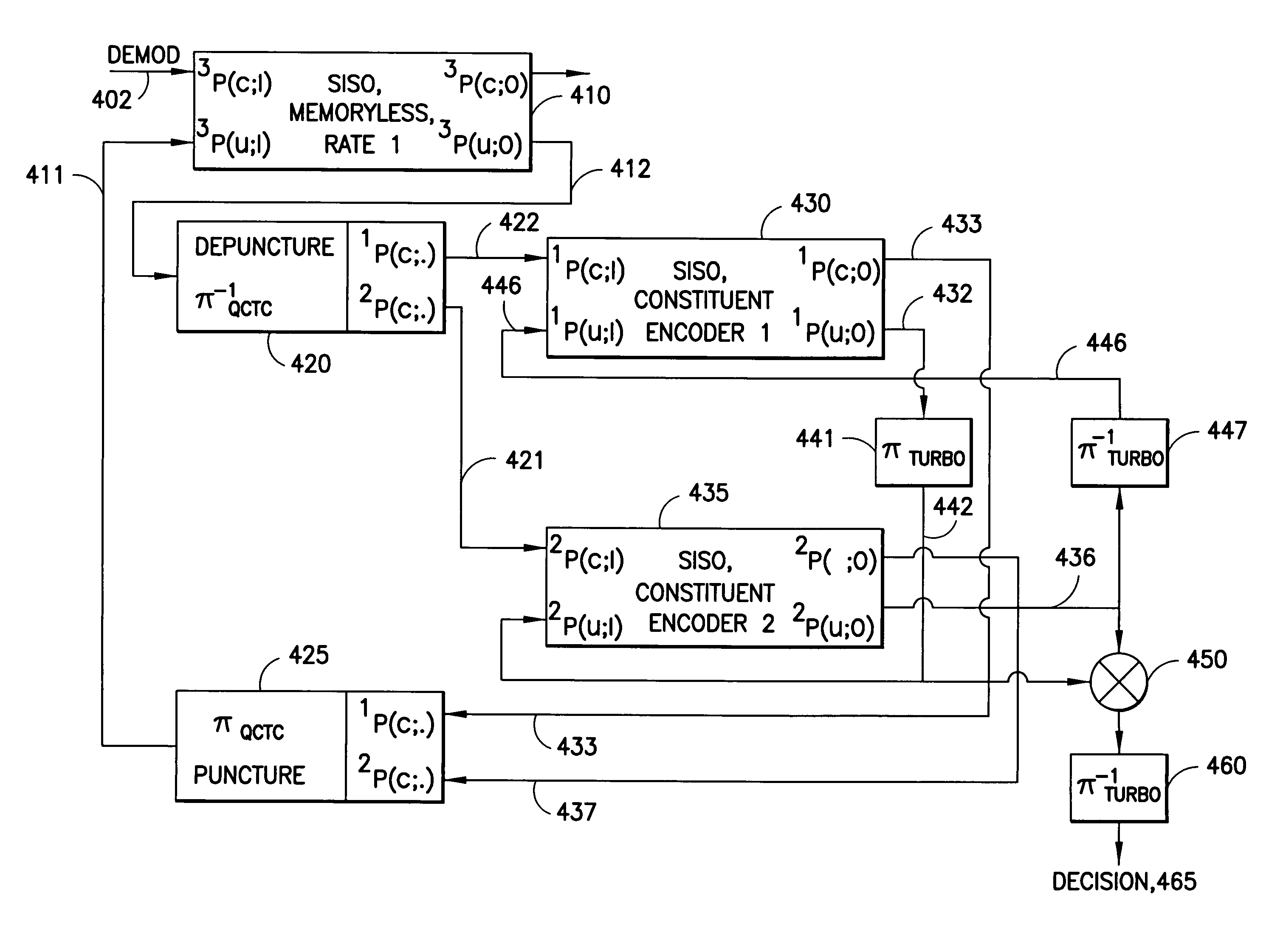Apparatus using concatenations of signal-space codes for jointly encoding across multiple transmit antennas, and employing coordinate interleaving
a technology of signal-space codes and antennas, applied in the field of multi-antenna transmission, can solve the problems of increasing the error frequency at the decoder, affecting certain capacity advantages, and affecting the efficiency of the decoder
- Summary
- Abstract
- Description
- Claims
- Application Information
AI Technical Summary
Benefits of technology
Problems solved by technology
Method used
Image
Examples
Embodiment Construction
Below, we distinguish between information interleaving and coordinate interleaving; the former is well understood in the art (“turbo” codes), and acts on the information sequence (e.g., unencoded bits), while the latter, explained in more detail in the sequel, operates on the coordinates of the complex sequence that results from encoding and modulation.
The present invention is in one aspect a method for transmitting, with both increased diversity and coding redundancy in fading channels as compared to prior art methods, an input signal from a plurality of transmit antennas, after concatenation of at least two signal space encoders for multiple transmit antennas—such as a parallel concatenation of at least two systematic and recursive signal space encoders for multiple transmit antennas that employs interleaving the information symbols for all but possibly one of the parallel concatenated encoders. The method is explained with reference to example(s) that include jointly encoding, ov...
PUM
 Login to View More
Login to View More Abstract
Description
Claims
Application Information
 Login to View More
Login to View More - R&D
- Intellectual Property
- Life Sciences
- Materials
- Tech Scout
- Unparalleled Data Quality
- Higher Quality Content
- 60% Fewer Hallucinations
Browse by: Latest US Patents, China's latest patents, Technical Efficacy Thesaurus, Application Domain, Technology Topic, Popular Technical Reports.
© 2025 PatSnap. All rights reserved.Legal|Privacy policy|Modern Slavery Act Transparency Statement|Sitemap|About US| Contact US: help@patsnap.com



